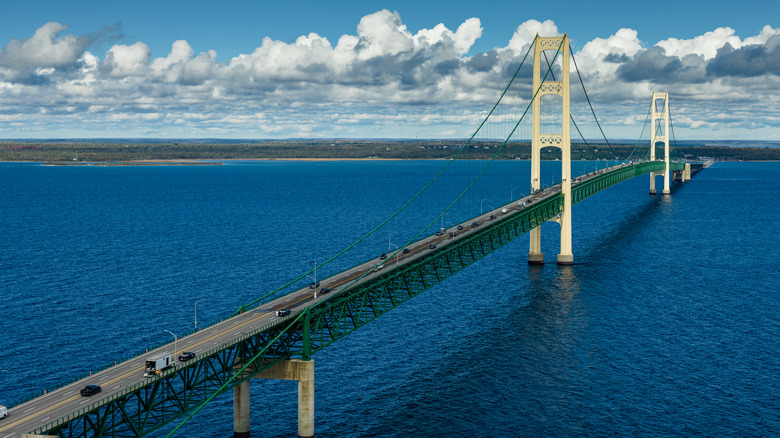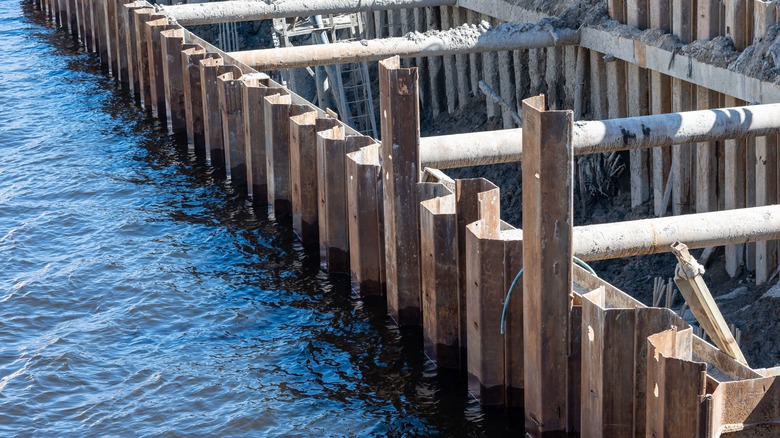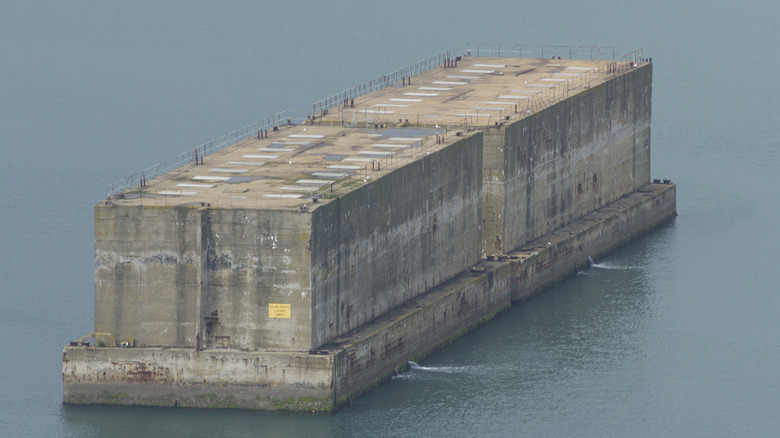Here's How Bridges Are Built Over Water
There are five major steps to building a bridge: planning, laying the foundation, placing piers and supporting structures, finishing up the superstructure, and finally, conducting safety checks to examine issues that could cause a collapse. But as you might have guessed, bridges over water present unique challenges. This does not include tiny bridges, like the recent 3D-printed steel bridge in Amsterdam, as they don't need piers for support.
The biggest challenge is constructing a solid foundation, as it requires careful planning and consideration from engineers. Engineers must consider the soil type, water depth, and technology available to build it. The conditions for building the foundation are also important. Ideally, you would want to remove all the water and build on dry land, but that is not always possible. In those situations, other techniques may be used.
These are some of the techniques for building bridges over shallow and deep water. Some methods can be used in both conditions, but this is a general idea of how they work.
Building in shallow water
Shallow water bridges are often supported by a pile foundation. This foundation is created by hammering large poles, generally made of concrete or steel, into the submerged soil with pile drivers. Getting the large pile drivers over the target often requires floating platforms above the surface. Once the piles hit a hard layer of soil, they turn inward or outward at an angle, allowing them to support the lateral load. The final step of this process is to install pile caps to distribute the bridge's weight and load under the surface.
Cofferdams can be used in shallow water to make foundation building easier. First developed by the Romans, cofferdams are watertight enclosures with water pumped out of them, giving workers solid ground. Today, most cofferdams are made of sheet piles and steel plates. Getting the components into the ground requires a large hammering device. Once the structure is complete, the cofferdams are usually removed.
Building in deeper water
For deeper water, bridge construction needs to employ a different strategy, meaning the use of Caissons. A caisson is a hollow structure, typically a box or cylinder, vital to many bridges' structural integrity — and necessary for bridges that require piers, like suspension bridges. The caisson is often built elsewhere, and then transported to the construction site.
Box caissons, with their open top and closed bottom, are sometimes used for bridges over oceans. A foundation of rocks and soil must be prepared before a box caisson can be placed. Once lowered into the ocean, the top part of the caisson remains exposed. Concrete is then poured into the structure to seal it off and provide stability.
In some instances, pneumatic caissons may be used. These control the flow of soil and water into the structure. The inside of the structure is airtight and pressurized, allowing workers to go inside and excavate the soil.
The drill shaft method can also be used to construct bridges over deep bodies of water. This technique involves drilling rigs into the seabed while pumping excess water out. Then, a steel pipe is inserted and filled with concrete to provide a stable foundation for a bridge.


